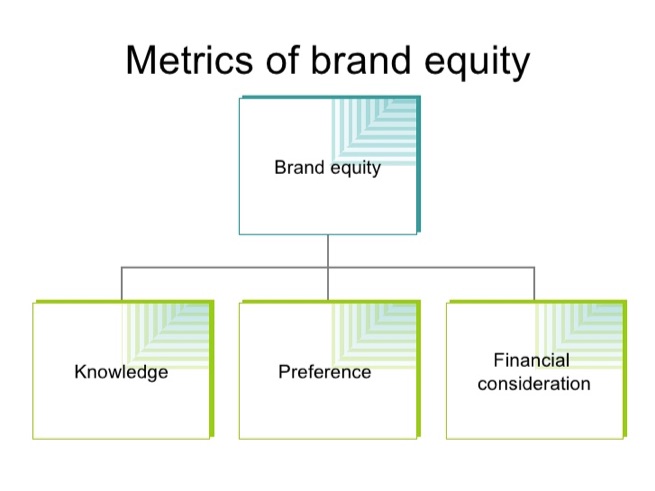Before we get started, let’s get one thing straight:
If the product or service your company offers doesn’t live up to your customers’ expectations, your business isn’t going to get very far.
That being said, it’s important to note that the quality of your product or service isn’t the only factor that determines the level of success your company will achieve.
You also need to worry about how your company’s brand is perceived by your customers and prospects.
Think about some of the most famous companies in the world – and what their brands represent:
Apple is known for its innovative technology and for always looking to the next big thing.
Mercedes-Benz consistently develops high-end luxury vehicles that exude class.
IKEA sells durable furniture at a price even college students can afford.
When you think of a product from one of these companies, you don’t even need to know what the item is. If it’s from Apple, it’ll be innovative. If it’s from Mercedes, it’ll be classy. If it’s from IKEA, it’ll be sturdy.
Such a universally-held perception of a brand’s products or services provides an incredible amount of value to a company.
This value is a company’s brand equity.
Brand equity can be broken down into three components:
- Consumer perception
- The effect this perception has on your company
- The value of this effect
This value can be broken down even further, into tangible and intangible factors.
Tangible factors are quantitative values, such as revenue, profit (or loss), and sales numbers.
Intangible factors are qualitative values, such as consumer awareness of your brand, and goodwill.
Because brand equity involves tangible and intangible factors, determining brand equity from an objective standpoint can prove to be difficult. In the next section, we’ll take a look at the important metrics and factors to focus on when attempting to come to a consensus on your brand’s equity.
Which Brand Equity Metrics Should You Measure?
According to Branding Strategy Insider, measuring brand equity requires you consider three metrics:
- Knowledge Metrics
- Preference Metrics
- Financial Metrics
As we describe each of these metrics in greater detail, you’ll learn how they relate to the components of brand equity mentioned above. You’ll also get a better idea of how tangible and intangible metrics can be analyzed and assessed not just in isolation, but as cohesive parts of a greater whole.
Knowledge Metrics
Put simply, knowledge metrics measure the popularity of your brand.
But knowledge metrics go much deeper than a simple “yea” or “nay” with regard to your brand’s popularity.
According to a 2011 article published in the Asian Journal of Business Management, these metrics assess the consumer’s awareness of and association with your brand throughout various stages of aided, unaided, and top-of-mind recognition and recall.
This awareness can then be classified into one of two groups.
Functional associations relate to the use of your product or service.
To best illustrate what a functional association is, consider the following scenarios:
- You see a picture online that’s clearly been doctored. You scroll down to the comments section and furiously type “Photoshopped!”
- You sneeze five times in a row, then ask your coworker to hand you a Kleenex.
- You cut your finger and run to the bathroom to get a Band-Aid.
What do all three of these examples have in common?
In each of these cases, you used a company’s product to describe a generic item. The photo wasn’t necessarily doctored using Photoshop – it could have been any photo-editing program. When you asked for a Kleenex, you were really just asking for a tissue. Even though the bandages in your bathroom are generic store-brand items, you still called them by the more well-known company name, Band-Aid.
These products are so well-known that their functions have become synonymous with their brand – even though there are numerous other products like them on the market.
When assessing your brand’s functional associations, consider the following questions:
Do customers or prospective customers know and understand what your product or service actually does? Do they know of the value they’ll get from using it? Do they perhaps have a misguided or misunderstood sense of its functions and/or value?
The answers your customers or prospects provide to these questions can prove to be extremely valuable to your company as a whole.
You might recognize a need to focus more on clarity in your advertising and marketing initiatives with regard to what your product actually does.
Or you might realize you’ve been targeting the wrong persona from the get-go.
Or, you might learn that your customers are merely content with the service you provide – but would be even happier if you provided a bit more than you currently do.
Whatever the case may be, data regarding functional associations allow you to better understand how your customers actually use your product, whether or not they’re using it in the way you’ve intended, and what else they’re looking for from your company.
Emotional associations detail how your product or service makes your customers feel.
How did they feel about purchasing your product for the first time? How about while they were using it? After using it? Do they think about your brand even when they aren’t in need of your services?
To be sure, the answers to these questions relate to the functional associations mentioned above – but they are important in their own right, too.
While the functional information is more utilitarian in nature (as in, it tells you whether your customers got the expected value out of your product), the data related to emotions will tell you how the customer felt once such value was (or was not) provided.
Consider the following example:
Two customers walk into a coffee shop. Customer A is a coffee enthusiast, while Customer B simply needs a cup o’ joe before heading to work. Their orders are identical. Customer A takes one sip, realizes the coffee is terrible, reluctantly swallows, and pours the rest out. Customer B takes a sip, recognizes it’s not the best coffee he’s ever had, but finishes the cup on his way to work anyway.
Obviously, Customer A didn’t get any functional value from the product – and his emotional association with the brand will be tainted. Customer B, on the other hand, did get full value from the product, but is relatively neutral in terms of emotional association.
Now, consider a Customer C, who’s just looking for a quiet place to get some work done. To him, the quality of the coffee offered is actually secondary to the coffee shop’s atmosphere. For this customer, both functional and emotional associations would be completely different than our first two customer examples.
For a less hypothetical example, consider Nike.
The popular athletic apparel and equipment company is based around a single, three-word slogan: Just Do It. You planned on hitting the gym after work, but got stuck in traffic for an hour on the way home? Just do it. You want to start walking during your lunch break, but don’t want to be sweaty and sticky for the rest of the day? Just do it. Thinking of skipping leg day because you have a cold? Just do it.
When a brand empowers its customers as much as Nike does, the company’s products essentially sell themselves.
When focusing on knowledge metrics, you’ll end up collecting a wide range of data. In turn, you’ll have a much better understanding of the subjective value of your product or service across a large customer spectrum – and can focus on improving your services for those who make up the bulk of your customer base.
Preference Metrics
Compared to knowledge metrics, preference metrics are a bit easier to nail down.
Preference metrics do deal with how your customers perceive your brand. But these metrics are measured objectively with regard to your company’s position within your industry.
When looking at preference metrics, you’ll want to consider the following factors:
Brand relevance is a company’s ability to identify and provide a specific benefit – and to align the company’s brand with this value.
Companies with high brand relevance have at least one unique selling proposition (USP) that sets it apart from the competition. A good example of this is TOMS and its One for One program. Though the shoes TOMS sells are relatively ordinary, the company pledges to help a person in need for every pair it sells (in addition to any other TOM product sold). To the socially-conscious consumer, this USP allows TOMS’ shoes to stand out among a sea of run-of-the-mill walking shoes.
Accessibility is the ability of a brand to reach its target market – and provide its intended value to consumers.
When it comes to accessibility, there may be no better example than Starbucks. No matter where you are in the United States, there is a pretty good chance you’re no more than five miles from the nearest Starbucks. The company even has kiosks located inside malls, supermarkets, and department stores. Whenever the mood for a cup of coffee hits you, there’s almost certainly an accessible Starbucks nearby.
Emotional connection relates to a brand’s ability to form a relationship with its customers, in turn leading to loyalty.
You see this all the time when it comes to “warring” companies. Coke vs. Pepsi; Sony Playstation vs. Microsoft Xbox; Apple vs. Samsung. The list goes on.
The products these companies offer are objectively similar. Whether an individual consumer chooses one over the other often comes down to preference. But, once that consumer makes a choice, that company must provide as much extra value as possible in order to forge an emotional connection if it wants to keep that customer from switching sides.
Value compares the cost of your product or service to what your customer gets in return.
Simply put, your prospects will always be looking for “more bang for their buck.” If you can provide the same service as your competitors, and do so for a lower cost, you’re already providing more value to your customers.
Putting all of these together, you’ll then be able to gauge where your brand ranks among competing companies in your industry. This information can then be used to determine whether your company is in a position to create or increase loyalty within your customer base.
Financial Metrics
Financial metrics are perhaps the most straightforward of the three measurements of brand equity.
By analyzing your company’s financial situation – both internal and compared to the competition – you’ll gain a better understanding of the monetary value of your brand.
The most important financial metrics to consider are your company’s:
- Market share: The percentage of overall sales in your industry that your market takes in
- Transaction value: The price you offer your product or service for
- Price premium: Your company’s ability to offer your product or service for a higher-than-average price to increase its appeal
- Revenue generation and potential: The amount of money your company has made by selling products or services, and the potential revenue to be made if trends continue
- Growth rate and sustainability: Your company’s ability to scale as revenue increases
While analyzing these measurements in isolation will give you an idea of the success of your company as a whole, by assessing them in relation to knowledge and preference metrics you’ll be able to discern the value your brand brings to your company.
3 Strategies for Measuring Brand Equity
Now that we know what brand equity entails, let’s take a look at some ways to measure it.
Come to a Consensus
Before you assess your brand’s equity, you’ll need to ensure your company’s stakeholders have a complete understanding of what brand equity actually is.
Above all else, make sure everyone understands the above-mentioned facets of brand equity, as well as how they relate to one another.
Once everyone is on the same page, ensure your team understands why analyzing brand equity is so important. Though the definition of brand equity is objective, the reasons for measuring it will vary from company to company.
Are you:
- Analyzing what drives your brand’s strength?
- Assessing the performance of brand management?
- Determining the value of your brand in anticipation of selling your company?
While you should always assess each of the above-mentioned metrics to get a complete picture of your brand’s equity, some factors will be more important than others depending on your purposes.
For example, if your company is relatively new and you want to assess your customer base’s loyalty, you’d focus more on knowledge and preference metrics than financial. On the other hand, if you’re preparing to sell your company off, measuring financial metrics would be your top priority.
Once you’ve determined which factors to focus on, you can then begin looking at the bigger picture.
Look for Trends and Anomalies
When analyzing brand equity metrics, both consistency and inconsistency among the data collected can provide information that can be valuable to your company.
First, take a look at your industry as a whole. Are there any areas in which some, most, or all companies fall short when it comes to providing value to customers? Have certain companies within the industry recently seen better results than in the past? If so, what have these companies changed that may have caused such improvements?
After answering these questions, look inward to your own company. What have you done to increase customer loyalty, or to provide added value to your most loyal fans? How have you improved your service to adapt to the changing needs of your customer? Have these initiatives been worth the effort?
It’s worth noting here that, while it’s easy to pinpoint anomalies in data, it’s much more difficult to pinpoint the cause of such inconsistencies. The coffee shop example mentioned earlier in this article illustrates this perfectly: unless you collected more data about each customer’s desires, there’d be no real way to tell why they were satisfied or not satisfied by the service they received. In other words, when analyzing anomalies in your collected data, you need to consider all concurrent data if you want to have a hope of figuring out why the anomaly exists, and what it means to your brand.
Think Quantitatively and Qualitatively
We alluded to this sentiment earlier, but it bears repeating:
To get a good sense of your brand’s equity, you need to think in both quantitative and qualitative terms.
As you might expect, quantitative data is most pertinent when analyzing financial data relating to brand equity. Data such as sales numbers, revenue generated, and your company’s net worth are all worth paying attention to, as are data regarding market position and product value.
But this data won’t tell you much about your brand’s equity if analyzed in a vacuum.
That’s where qualitative data comes into play.
Qualitative data is “intangible,” meaning it cannot be pinned down as easily as quantitative data. This is data such as customer satisfaction, brand recognition, and emotional connection. Without a frame of reference, the information customers will provide with regard to such data will be subjective to that specific customer only.
However, by providing reference points for your customers when asking them to complete surveys regarding your brand, you can gather such intangible data in a way that makes it quantifiable. For example, you might ask your customers to rate their understanding of the service you provide on a scale of one to five, or to rank five qualities of your service in order of importance.
(Note: You can collect additional qualitative data by asking them to explain their responses to these prompts, as well. This will make it much easier to discern what qualities of your brand your customers deem important, and why they believe so.)
As mentioned in the previous section, analyzing quantitative and qualitative data in conjunction with one another will allow you to pinpoint trends and anomalies, determine the root cause of such, and make adjustments to your company’s operations as necessary.
Brand Equity and the Sales Funnel
The insight gleaned from brand equity data can benefit your company in a number of ways.
Once you’ve analyzed and assessed this data, you’ll:
- Have a better understanding of your target personas
- Be better equipped to develop and improve your company’s marketing and advertising strategies
- Be better prepared to meet the needs of customers throughout all stages of the sales funnel – in turn maximizing the potential of these customers becoming loyal to your brand.
The way your brand is perceived by your target customers can determine whether they end up doing business with you or with your competition. After you’ve ensured the product or service you offer is of the highest possible quality, implementing strategies to improve your brand’s equity can be the “oomph” your company needs to become the go-to in your industry.
About the Author: Josh Brown is the Content & Community Manager at Fieldboom. Create beautiful forms and surveys in less than 5 minutes with Fieldboom. Try it free. You can follow Fieldboom on Twitter.





Comments (10)